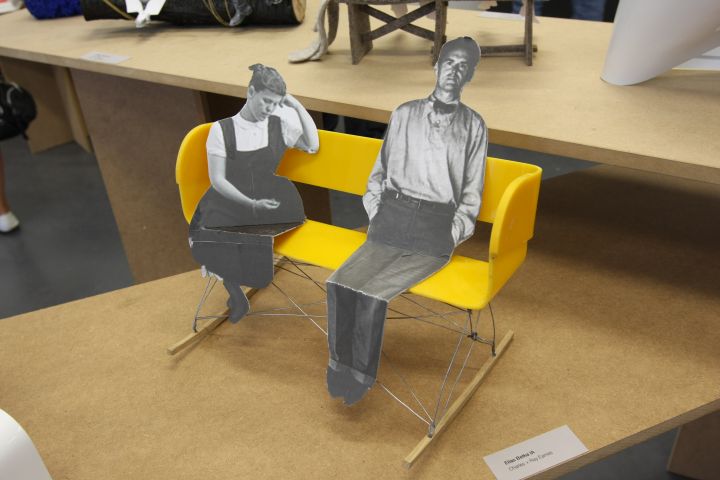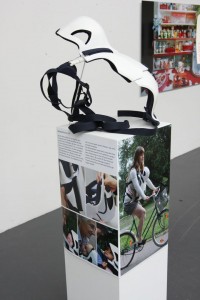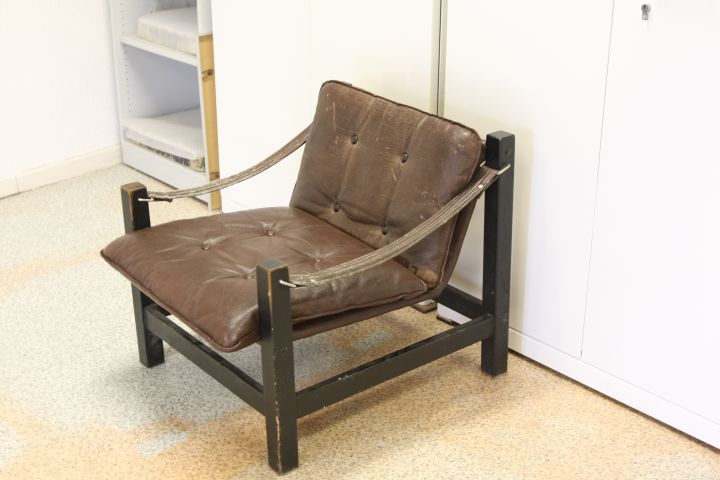Following our visits to the Bauhaus University Weimar, Fachhochschule Potsdam, Kunsthochschule Berlin-Weißensee and Universität der Künste Berlin the final stage of our 2011 summer tour was Burg Giebichenstein Halle.
It may just be us, but we are firmly of the belief that Burg Giebichenstein students complete more, and more varied, seminars than students at any of the other schools we visit.
At least based on the presentations at their end of year show.
Be it designing record sleeves, creating items based on the characteristics of fruits/vegetables or designing the lamp that Isamu Noguchi would design if he were still active today - every room of every building seems to house at least one exhibition.
If not two.
Among those that most caught our attention were "eine Bank für zwei" and "Bodenreform"
Eine Bank für zwei set students the challenge of designing a bench for two prominent "creatives" - be they designers, architects, musicians, actors, whatever. The aim being that the benches should represent both the character's of the users and their relationship to one another in the form language and material choice.
A lovely little project that allowed the students the chance to explore how they understand the work and character of those people they have as references, which should then help them improve their own techniques.
And allowed us the chance to enjoy the results.
Aside from delightful solutions for Gerrit Rietveld and Charles Eames or Konstantin Grcic and Dieter Rams the highlight for us was Elias Betka's bench for Charles and Ray Eames: a double seater RAR. An idea that not only blew our socks off, but much more got us thinking about in how far Vitra can - or perhaps better put would - ever consider further developing the work of the Ray and Charles Eames.

Although Bodenreform was officially concerned with floors, floor-coverings and exploring the role of such in architecture and design, the project from the seminar that most appealed to us didn't really seem to fit the remit.
As far as we could see.
A fact which of course didn't detract from the genius of Hobo by Julian Heckel.
Reminiscent of some Victorian adaption of a painters easel for wandering poets, Hobo is, for us, a small table that folds flat to be carried as a backpack, and when opened can be lent against a tree or other free standing structure.
And used to help you ease your tortured soul by comparing your rejected love to a chaffinch struggling to open seed. Or similar
There is also a small seat. That didn't appeal to us so much.
The table however is a delightful piece of work.
Elsewhere we really liked Ausgewachsen by Annika Marie Buchberger - with one small proviso. Created for her masters thesis Ausgewachsen is a series of kids furniture where different elements can be placed on a universal base.
Nice idea, well executed.
Except as far as we could see the base comes in three sizes - and the legs aren't exchangeable. Which means if you want to vary the heights of the objects, you have to have all three bases.
For us the better trick would be to have interchangeable legs.
Our view, and not one that distracted from our enjoyment of the project.
Another child centred project - and there were a lot of them on show, not sure if Halle is a particularly child heavy town or if Burg Giebischenstein students are just particularly fertile - was Igi by Constanze Hosp.

Parents wanting to travel with a young baby on a bike are limited to a trailer. Or the somewhat risky business of a conventional, body hung, child carrier.
Igi is in essence a hard case child carrier that allows you to cycle with your child securely strapped to your chest.
And not just cycling. Also for travelling in over crowded public transport Igi gives new parents that little bit more security an confidence.
Despite the many highlights at the Burg Giebichenstein exhibition one irritation did cloud our day - where was the product design Graduate show?
OK we'd already seen it at DMY, but had still arrived in Halle looking forward to getting a second chance, and maybe a little more time, to explore some of the products.
But high and wide there was neither sign of the Graduate show nor any one who could direct us to where it was.
Sadly.
However despite that fact the 2011 Burg Giebischetsein exhibition was a more than fitting end to our summer tour - and set us us up nicely for our Autumn marathon.
As is traditional we've created a small facebook gallery at facebook.com/smowcom
And can anyone help us identity this ⇓ ?
